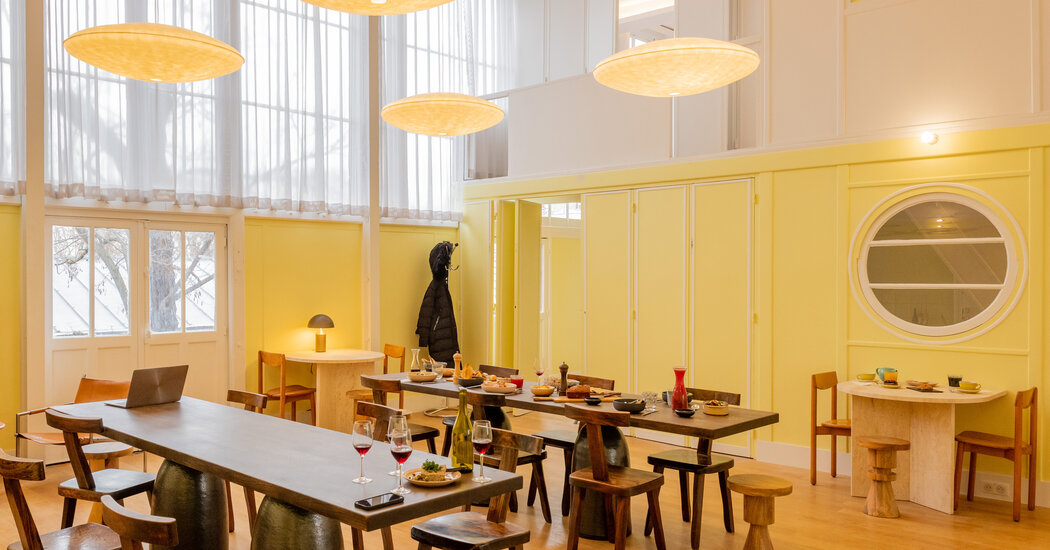This spring, the recently renovated Bourdelle Museum in Paris’s Montparnasse district opened a luminous new cafe-restaurant, Le Rhodia, named after the French sculptor Antoine Bourdelle’s daughter. The spare, daffodil yellow dining room occupies the second story of a 19th-century artist’s studio where Rhodia Bourdelle and her husband, the Art Deco interior designer Michel Dufet, once lived. “We wanted it to feel like entering someone’s apartment,” says Marc-Antoine Servella, the co-founder of the Parisian architecture studio SAME, who oversaw the cafe’s design. He furnished Le Rhodia with a mix of midcentury flea market finds and custom pieces commissioned from French artisans in materials ranging from travertine to oak, while preserving a few original details like a wood-burning stove and a large oculus window (designed by Dufet in the spirit of the ocean liner cabin décor for which he was best known). Museumgoers can also dine outside on the mezzanine terrace next to a colonnade of watchful bronze busts. The menu offers refreshing fare, with culinary references to Bourdelle’s hometown in the southwest of France and a Latin American influence — a homage, says the French chef Jean-René Chassignol, to the dozens of students from Peru, Chile and Argentina who apprenticed with Bourdelle in these ateliers. Dishes, which skew on the lighter side, include a black-bean purée with pickled beets and corn nuts, and seasonal vegetable empanadas. Pastries, like the Rhodia brioche with orange-blossom cream or the honey-and-thyme-infused Madeleine d’Antoine, are served all day. instagram.com/lerhodia_bourdelle/.
See This
Juan Pablo Echeverri’s Self-Deprecating Portraits
When the artist Juan Pablo Echeverri died at the age of 43 last year, he left behind more than 8,000 self-portraits taken in passport photo booths around the world. What had started as a diary of hair styles and piercings grew into a conceptual art project as Echeverri evolved as an artist. This summer, a grid assembled from about 400 of those photos will hang at James Fuentes Gallery in Manhattan; another has been on view at Between Bridges, the nonprofit in Berlin run by Echeverri’s former employer, the photographer Wolfgang Tillmans, who helped curate both shows.
Echeverri’s sudden death from malaria came just as his career was zooming up, with a show in León, Mexico, and work in the collection of the former president of his native Colombia. But it would be a mistake to…
Click Here to Read the Full Original Article at NYT > Travel…
